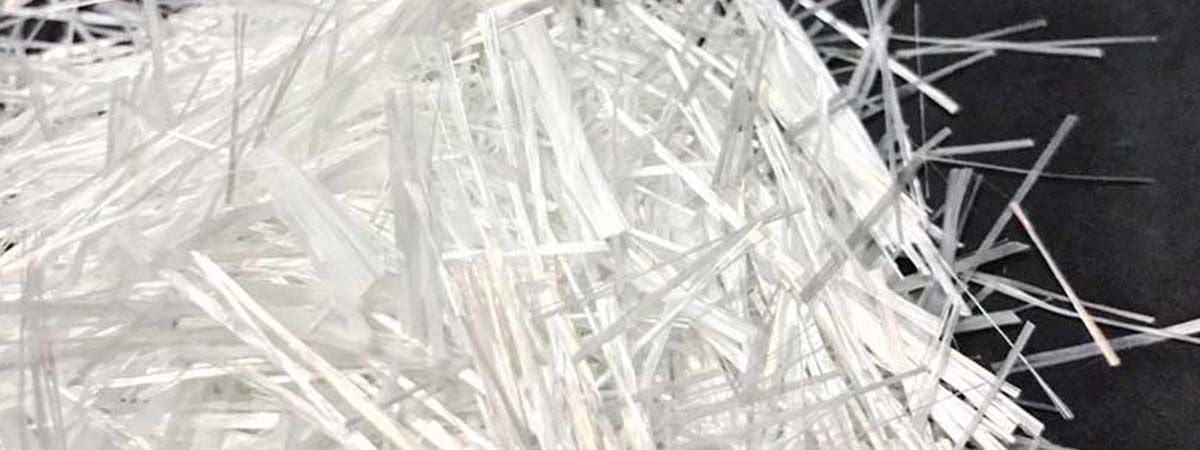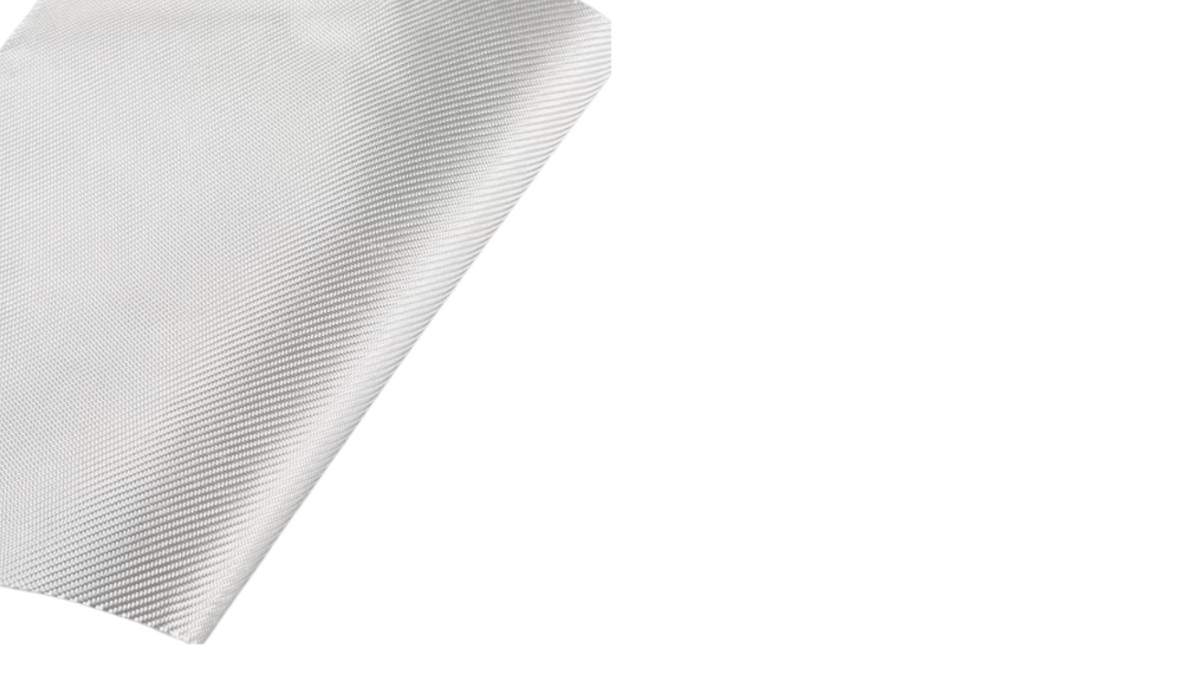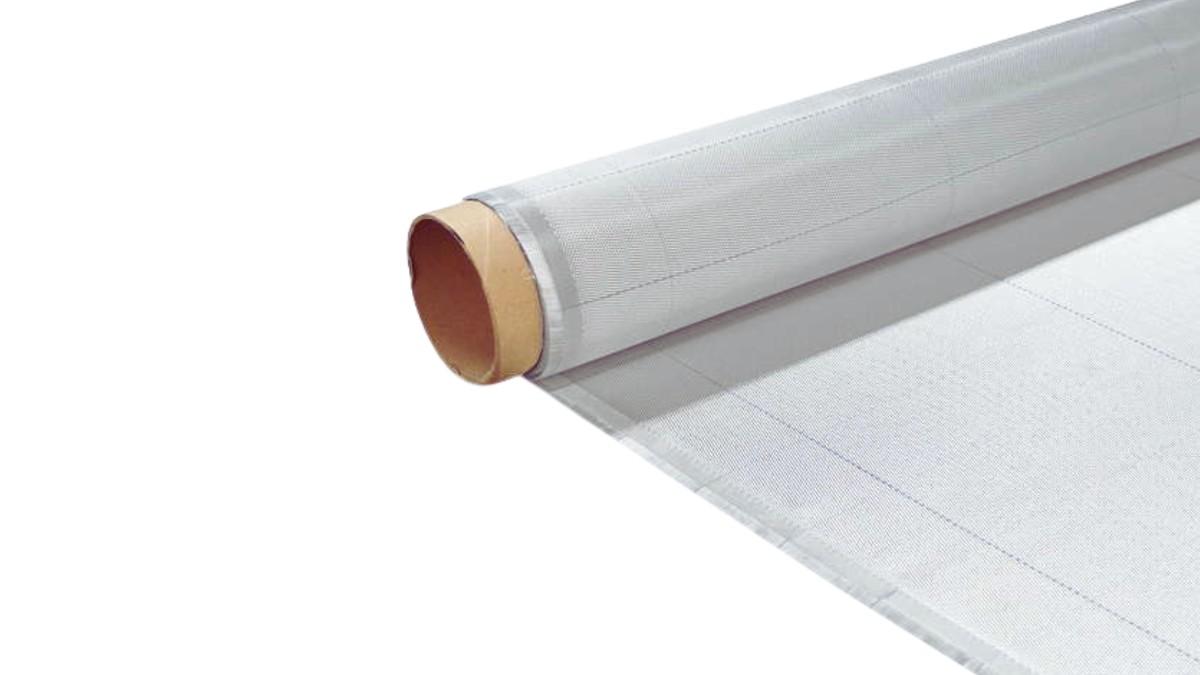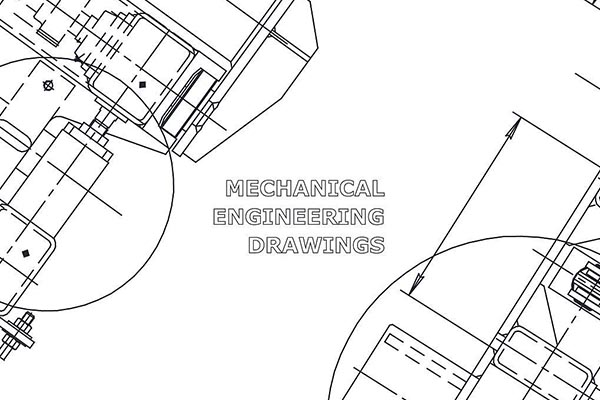 Fiber Glass Fabric
Fiber Glass Fabric
Image Description: White fiberglass fabrics placed together in raw form.
Fiberglass must be familiar to everyone, from surfing enthusiasts to swimmers and every commuter who uses a car. Industries widely use the strong fiberglass composite because of its excellent mechanical and physical properties. Fiberglass is vital in creating products that typically feature long life cycles, including surfboards, swimming pools, and auto components.
At Premium Parts, we specialize in the delivery of CNC machining parts made from fiberglass composites such as PC+30%GF, Nylon+30%GF, PEEK+30%GF, etc. Read on to discover what fiberglass is, how manufacturers develop it, and how they use it in various settings.
What Is Fiber Glass?
 Fiber Glass Sheet
Fiber Glass Sheet
Image Description: A transparent fiberglass sheet with a smooth surface.
Fiberglass is a composite material. It usually combines glass fibers (as the reinforcement) with a polymer matrix (as the binder). Its prominence is because of its strength, durability, and lightness characteristics.
In addition, manufacturing factories recognize it for products like surfboards, pools, and boat hulls. Fiberglass can be easily molded into various shapes. Furthermore, the material has been in development for decades. It improves performance and flexibility. Manufacturers can make panels from different glass types and resins. They can develop fiberglass composites with specific features. These features include heat and impact resistance, along with protection against environmental stress.
How Fiber glass is Made?
 Fiber Glass Making Process
Fiber Glass Making Process
Image Description: An illustration showing the fiberglass making process with melting, fiber drawing, and fabric forming steps.
The process of making fiberglass involves the following steps:
Step 1. Melt Raw Materials
Fiberglass production involves mixing raw materials such as silica sand, soda ash, and limestone. These materials are heated to their melting point at high temperatures using a furnace. They soften under heat, turning into molten glass and providing the foundation of the fiberglass.
Step 2. Form Glass Fibers
After the melting step, the molten glass is forced through a series of tiny holes in a die. The process pulls the glass in long, steady strands and continuous filaments. Next, the fibers are cooled and solidified to form the base of fiberglass cloth.
Step 3. Coat with Resin
The process coats the glass fibers, bonding them together with resin. The resin also acts as a binding agent to the fibers and increases the fibers’ resistance to wear and tear. The intended coating, moreover, can prevent moisture, chemicals, and other conditions that affect the fibers.
Step 4. Weave or Chop
After coating, the fiberglass is woven into mats or chopped into small strands. Woven mats are particularly useful for structural applications, while chopped strands find use in molded parts.
Step 5. Mold and Cure
The fiberglass material is then shaped from molds. It involves heat and pressure to toughen the resin by creating a rigid structure at the end of the process within the set material. The process is also known as curing. It allows fiberglass to maintain its actual shape and strength as required.
Step 6. Final Shaping
Afterward, the fiberglass is cut and fashioned to certain specifications. It can be sawn into sheets, panels, or built to any particular shape and size as desired. The final product is now available for use in one or another application.
Why do Manufacturers Choose Fiberglass?
Fiberglass has a sufficient strength-to-weight ratio. The product is comparatively cheaper than other construction materials. For these peculiar properties, it is ideal in conditions that are harsh in terms of heat, corrosion, and chemicals. In addition, it can take or be shaped into various forms without compromising the structure. These qualities make fiberglass most sought-after in industries such as automobiles, aircraft, and construction.
Common Types of Fiber Glasses
The most common types of fiberglass are given below;
1. E-Glass Fiber
 E-Glass Fiber
E-Glass Fiber
Image Description: A close-up view of an E-glass fiber roll showing its smooth and shiny white strands.
E-glass is the most typical and frequent type of fiberglass used in the production of general-use products. It is mainly composed of silica, alumina, and other oxides. Moreover, it comprises good electrical insulating properties. E-Glass is widely utilized in electrical parts, printed circuit boards(PCBs), as well as in composites.
2. D-Glass Fiber

D-Glass Fiber
Image Description: A D-glass fiber sheet with a smooth white surface and fine woven texture.
D-glass is designed to possess high dielectric strength and low conductivity. Additionally, it entails excellent dielectric properties, particularly at high frequencies. As a result, D-Glass fiber is heavily used for applications such as electrical transformers and capacitors.
3. R-Glass Fiber is also known as T-Glass or S-Glass Fiber
T-Glass or S-Glass, known as R-Glass, possesses better tensile strength and impact strength than E-Glass. It found its applications in aerospace and military industries since such materials must show elevated performance and withstand severe conditions.
4. A-Glass Fiber
 A-Glass Fiber
A-Glass Fiber
Image Description: A white A-glass fiber material with a smooth and slightly glossy texture.
A-Glass is an alkali-lime glass. It is used in the reinforcement of concrete due to its exceptional durability. Besides, it offers good chemical resistance and finds use in construction, especially in the fabrication of fiberglass-reinforced concrete (FRC).
5. Advantex Glass Fiber
Advantex has superior resistance to alkalis. Due to its remarkable resistance to corrosion, heat, and chemical attack, it is most applicable for chemical process plants and equipment, and other industrial solutions.
6. ECR Glass Fiber
ECR (Electrical Conductivity Resin) Glass is a superior material that features electrical insulating characteristics of E-Glass with improved acid resistance. Industries widely use it in electrical and chemically demanding areas, such as printed circuit boards (PCBs) and industrial pipelines.
7. C-Glass Fiber
Manufacturers make C-Glass for areas with high corrosion risks. It provides better resistance to acids, alkalis, and moisture compared to other fiberglass. Industries usually apply C-Glass in chemical tanks, pipes, and liners.
8. Z-Glass Fiber
Z-glass exhibits high mechanical performance in terms of high temperatures compared to other types of glass materials. Moreover, it has very high strength, high stiffness, and heat resistance, which qualify it for aerospace, defense, and high-temperature uses.
9. S2 Glass Fiber
 S2-Fiber Glass Sheet
S2-Fiber Glass Sheet
Image Description: An S2 fiberglass sheet rolled up on a roller with a smooth white surface.
Engineers apply S2 Glass, a high-performance fiberglass, in structural applications for its high strength and modulus. In addition, the material has enhanced mechanical properties than S-Glass with excellent impact strength and low shrinkage for aerospace, marine, and military use cases.
10. AR-Glass Fiber
AR-Glass, or Alkali-Resistant Glass fibers, reinforce concrete in areas where alkali degradation is a common concern. Furthermore, its use is common in the construction industry to magnify the serviceability of concrete structures in aggressive environments.
11. M-Glass Fiber
M-Glass is a high-strength fiberglass with excellent mechanical properties. Usually, it’s stronger in tension and more heat-resistant than standard E glass. As a result, it is ideal for high-performance applications such as automotive parts, boat hulls, wind turbine blades, construction materials, electrical insulators, and sporting equipment.
Most Frequent Formats of Fiberglass
Here are a few formats of fiberglass that you must be aware of;
Fiberglass Cloth
Fiberglass cloth is formed from continuous glass fiber. The most common applications include composite structures in aerospace, automotive, and marine industries for lightweight, strong designs.
Chopped Strand Mat (CSM)
CSM forms as a random fiberglass mat, using short fiberglass fibers and binder resin. It finds extensive use in hand lay-up and spray-up processes. Manufacturers employ it to produce boat hulls, tanks, and car parts.
Woven Roving
Producers create woven roving by weaving continuous fibrous strands in a unidirectional pattern. Engineers apply it in frames that require high strength and moderate to high stiffness. For example, wind turbine blades and boat hull structures incorporate woven roving.
Fiberglass Roving
Fiberglass roving belongs to fiberglass strands. Fabricators usually align it parallel and commonly use it in filament winding, molding, and reinforcement. Fiberglass is optimum for the production of large composite structures, including pipes and tanks.
Preg (Fiberglass Prepreg)
Resin soaks into the prepreg, controlling the amount used. It suits high-performance applications in the aerospace and automotive industries. Design Engineers use it to fabricate parts like aircraft components and car body panels because of their high glass-fiber/resin ratio and consistent quality.
Physical Properties of Fiberglass
Below are tables outlining the physical, chemical, and mechanical properties of fiberglass, providing a concise and technical overview:
| Property | Description |
| Density | 2.5 – 2.6 g/cm³ (depending on the type of fiberglass) |
| Thermal Conductivity | Low, typically around 0.035 – 0.045 W/m·K |
| Melting Point | 1,200 – 1,400°C (varies by type of glass) |
| Color | Usually transparent or light yellow, depending on the resin used |
| Specific Heat | 0.84 – 1.1 J/g·K |
| Water Absorption | Less than 0.1% (varies with type of resin) |
| Electrical Insulation | Excellent (high resistivity, low dielectric constant) |
| Fire Resistance | Good (self-extinguishing in certain resins) |
Mechanical Properties of Fiberglass
| Property | Description |
| Tensile Strength | 1,500 – 2,500 MPa (varies by glass type) |
| Flexural Strength | 2,000 – 3,500 MPa (depends on type and resin used) |
| Compressive Strength | 1,500 – 2,000 MPa |
| Elastic Modulus | 70 – 90 GPa (depends on the specific type of fiberglass) |
| Impact Strength | 30 – 50 J (depends on the type and reinforcement) |
| Shear Strength | 50 – 150 MPa (depends on resin and reinforcement) |
| Hardness | Varies depending on type; typically in the range of 40–90 Shore D |
| Fatigue Strength | Excellent (fiberglass composites can withstand repeated loading) |
Chemical Properties of Fiberglass
| Chemical Property | Description |
| Acid Resistance | Fiberglass is vulnerable to damage when exposed to strong acids like hydrochloric and phosphoric acid at high temperatures. |
| Alkali Resistance | Fiberglass exhibits good resistance to alkaline substances, maintaining structural integrity in basic environments. |
| Bleach | Fiberglass remains unaffected by bleach, maintaining its properties even when exposed to this chemical. |
| Organic Solvents | Organic solvents do not alter the chemical composition or physical structure of fiberglass materials. |
| Mildew Resistance | Fiberglass is resistant to mildew and mold, preventing degradation in damp conditions. |
| Pest Resistance | Fiberglass is impervious to damage from insects or rodents, ensuring durability in various environments. |
| Dyeing Ability | Fiberglass cannot be dyed after production but can be pre-colored by adding dye to the resin mixture during manufacturing. |
| UV Radiation | Exposure to UV light can cause fiberglass to yellow, but other material properties like strength remain stable. |
| Fire Resistance | Fiberglass has excellent fire resistance, making it suitable for high-temperature applications. |
| Rot Resistance | Fiberglass does not rot, making it highly durable in outdoor and marine environments. |
Applications of Fiberglass
Design Engineers primarily use fiberglass to create the following products
- Aircraft Fuselages and Wings
- Wind Turbine Blades
- Boat Hulls and Decks
- Automotive Body Panels
- Chemical Storage Tanks
- Fiberglass-reinforced concrete (FRC)
- Insulation Panels (Thermal & Acoustic)
- Electrical Insulation Components (Transformers, Circuit Boards)
- Sports Equipment (Golf Shafts, Surfboards, Tennis Rackets)
- Water Filtration Systems (Tanks, Housings, Filters)
- Swimming Pools (Shells and Linings)
- Bathtub and Shower Enclosures
- Roofing Materials (Shingles, Panels)
- Storage Containers (Corrosive Materials)
- Marine Structures (Docks, Piers, Buoys)
Benefits of Fiberglass
Fiberglass delivers a high strength-to-weight ratio, making it ideal for high-performance applications. Besides, it is non-magnetic, non-corrosive, and moisture-proof, for durability in harsh environments. The process molds the material into intricate shapes, increasing design freedom. In addition, fiberglass has excellent insulation characteristics; both thermal and electrical. This heat resistance and nonflammability increases safety in numerous fields and at extreme temperatures.
Limitations of Fiberglass
Nonetheless, fiberglass is not without its drawbacks. You can find it relatively susceptible to impact forces; for example, it may crack or chip under pressure. Moreover, it tends to be more expensive to project compared to other available materials in the market. During construction, fiberglass produces dust and toxic/hazardous fumes to negatively impact human health. So, you must wear protective clothing while handling it. The material also has environmental implications, as fiberglass is hard to recycle and leads to disposal problems if you are investing in sustainable practices.
Glass Fiber Reinforced Modification Material
.jpg) Glass Fiber Reinforced Crystal Form
Glass Fiber Reinforced Crystal Form
Image Description: Glass fiber reinforced material in crystal form with a textured appearance.
PEEK+30%GF: Using PEEK as a substrate with glass fiber reinforced modification. More rigid than pure PEEK, with better load-bearing capability. Good creep resistance performance and dimensional stability.
PPS+40%GF: A Polyphenylene Sulfide Material Glass Fiber Reinforced Modified Materials. Good Creep Resistance, Load Bearing capability, and dimensional Stability. Self-extinguishing, With Good Corrosion Resistance, Hydrolysis Resistance, Good Oxidation Resistance, and the use of temperature -40~260°C.
PC+30%GF: PC as substrate with glass fiber 30% blended. Excellent Stiffness and strength. Dimensional stability.
Nylon+30%GF: Glass fiber significantly improves the strength and rigidity of PA6, making it perform well in terms of mechanical properties. Heat resistance, dimensional stability, and aging resistance of glass fiber reinforced nylon have been significantly improved.
Final Thoughts
To conclude, fiberglass is a vastly superior option for material. Since it’s stronger, lighter, and more moisture-resistant in chemical conditions. You can easily form fiberglass into complex geometries. For instance aerospace industries, automotive, and construction.
Besides enormous advantages, the material has its disadvantages as well. It usually affects sensitivity and recyclability. However, its performance and durability make it ideal for high-stress applications.
At Premium Parts, we provide CNC machining and injection molding services for glass fiber added material, like ABS, PC, Nylon etc with different percentage of glass fiber blended. We deliver innovation, accuracy, and dependability for the best engineering and quality in your projects.











